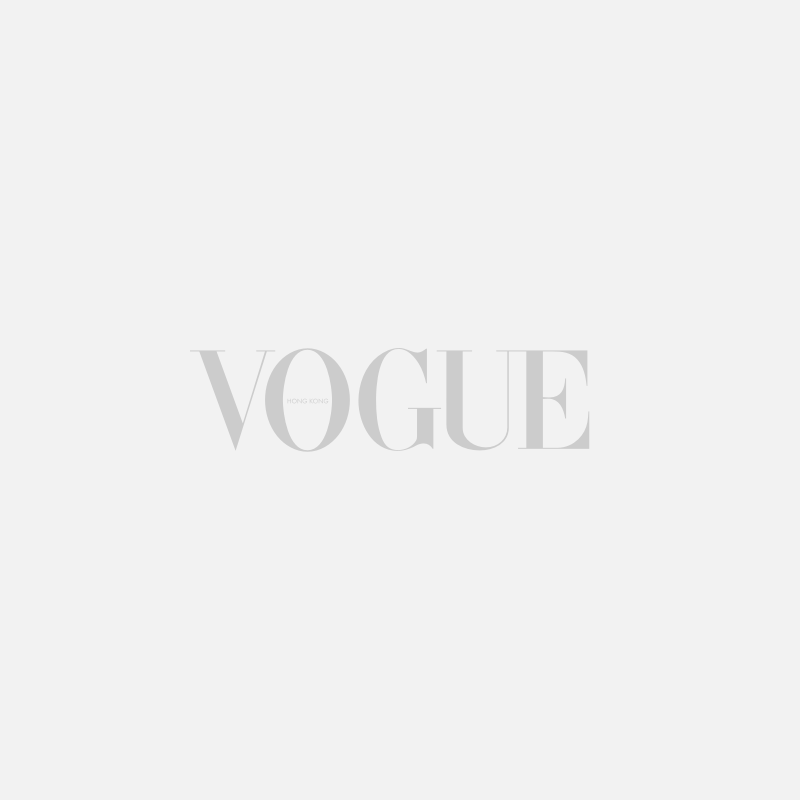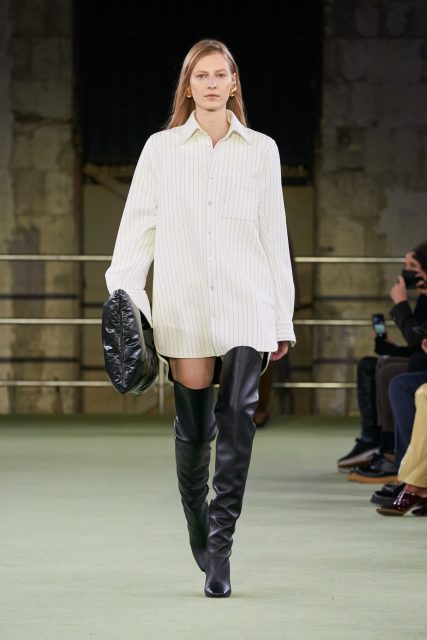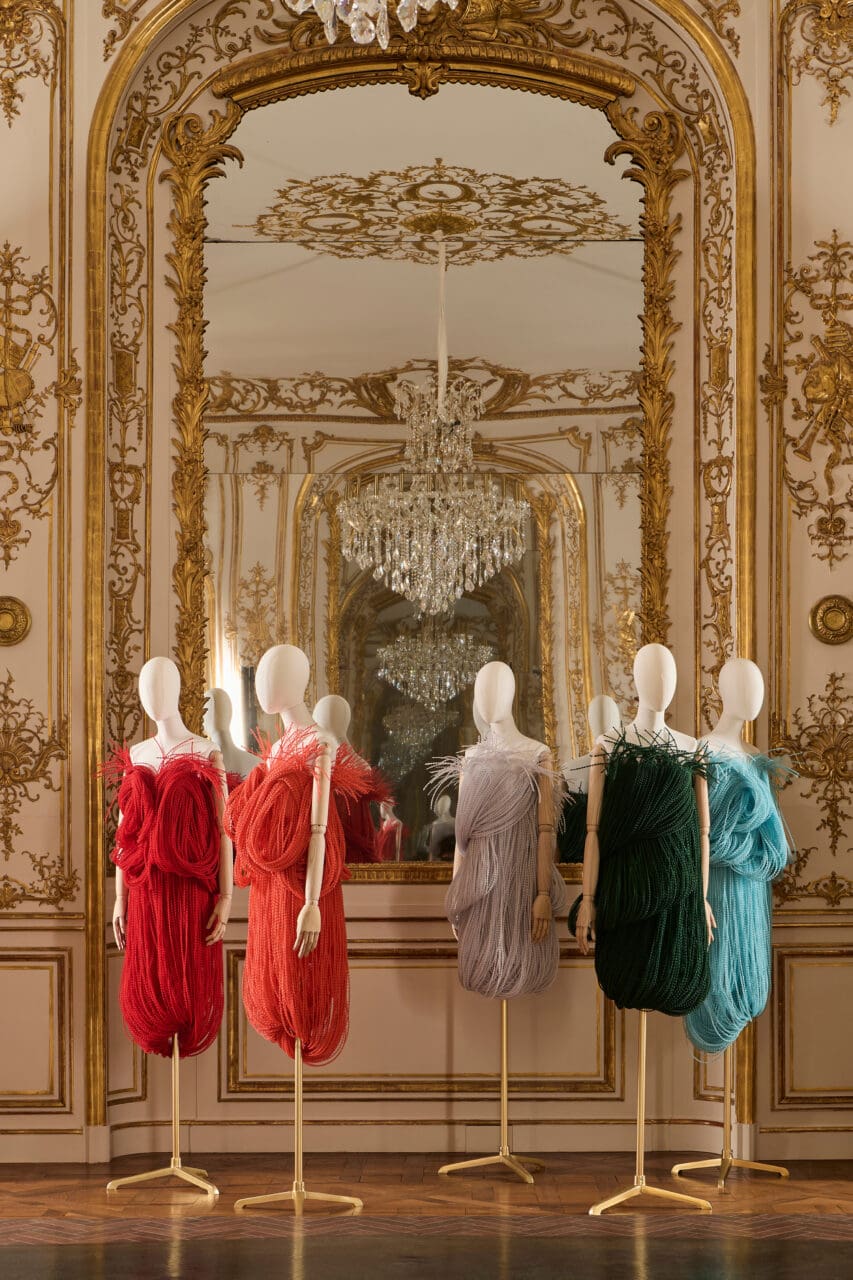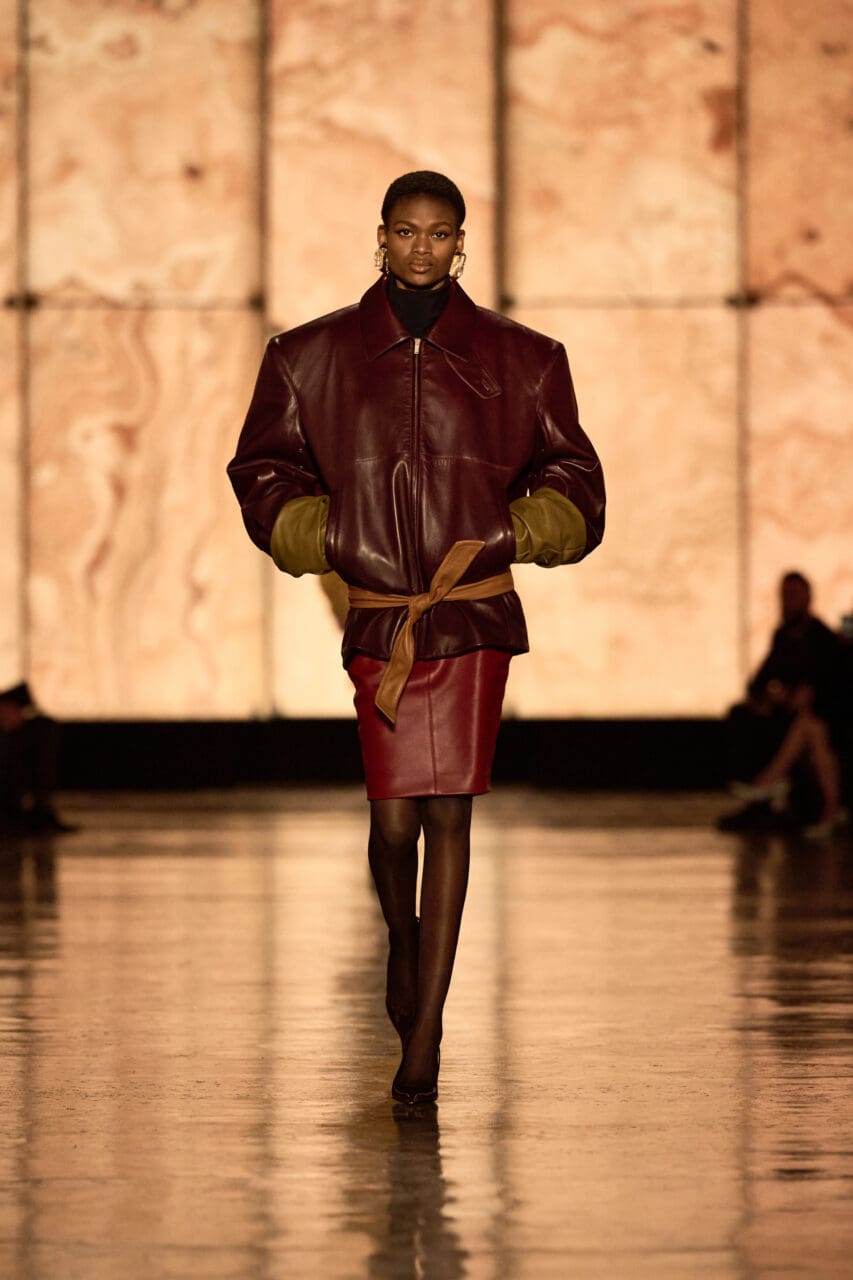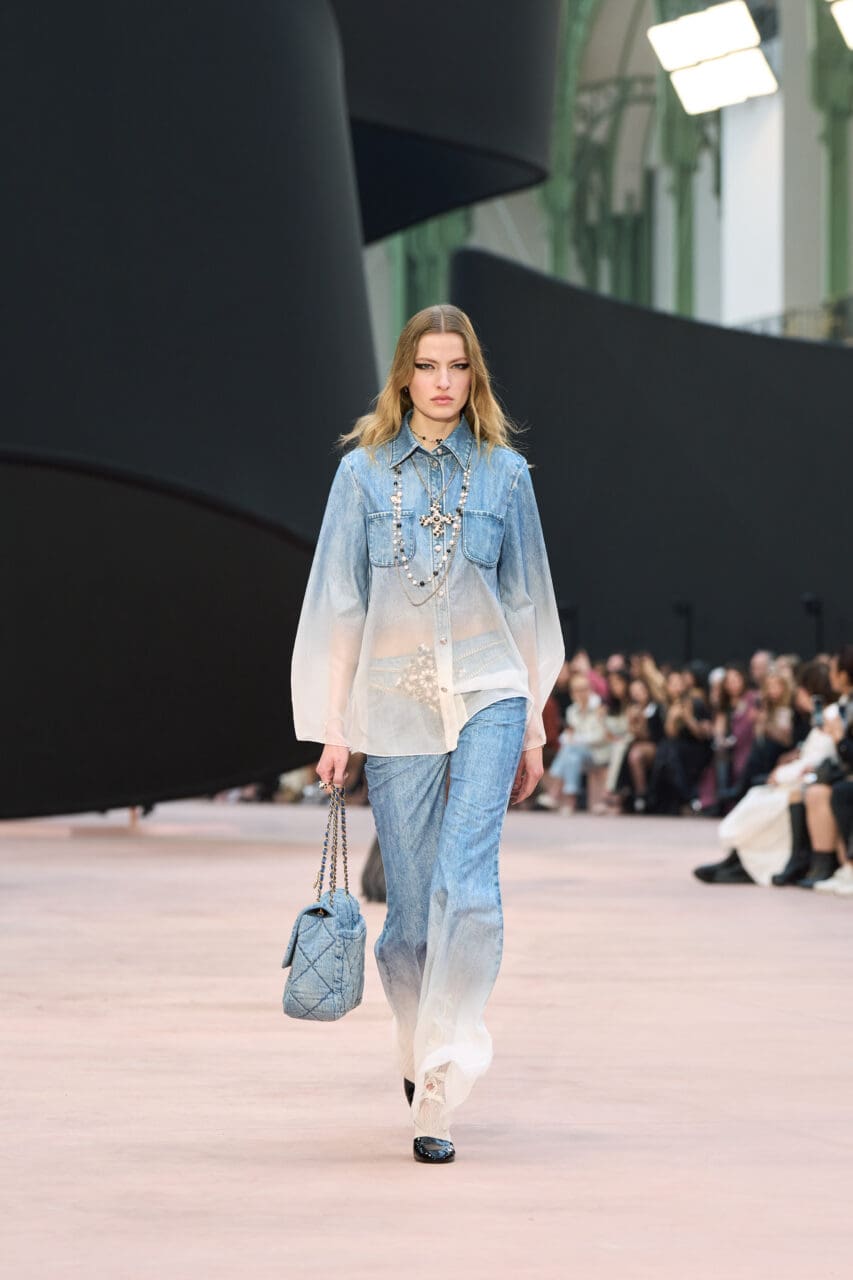Gender-defying looks, a suitably retro soundtrack, and an Adidas collab: British Vogue’s fashion critic Anders Christian Madsen brings you five things to know about autumn/winter 2022’s “Exquisite” Gucci show.
The show was intentionally heavy on menswear
After announcing his break with seasonality during the pandemic, Alessandro Michele brought the Gucci show back to the Milan schedule this season. But that didn’t mean a return to following the rules. In the middle of a fashion week devoted to womenswear, guests in the brand’s headquarters in Via Mecenate were shown a collection nearly fully composed of men’s looks. Those labels, of course, are entirely redundant when it comes to Gucci. “I thought it would be interesting, especially now that we’re so open to dialogues. I like to do things in a different way. It’s funny and spontaneous,” Michele said after the show. “Seven years ago, I came here with a men’s collection, and the reaction was that I had ‘invented’ gender fluidity,” he continued, referring to the first collection he headed up for Gucci. “I wanted to give a specific image of masculinity. My vision is broad. Men have opened the dialogue with the feminine world, but women also like men’s suits, and vice versa.” A very big part of Michele’s legacy at Gucci is gender-oriented, but as he demonstrated this season, his cause isn’t necessarily to make things ‘unisex’, but simply to wipe out any conventions surrounding the clothes women, and particularly men, can and can’t wear.
It was an ode to Michele’s defiance of gender codes
Michele covered his runway room in distorting mirrors as an illustration of how the clothes we put on our bodies can transform the way we see ourselves, physically and psychologically. “I use codes that are reflected in my own mirror. They help me to see how clothes can be corrupted. I shrink them, I expand them, I stretch them, and they become conveyers of messages about what we want to be in the world,” he explained. He opened the show doing just that, dressing a female model in heels and a traditionally masculine suit, allowing its magnified volume to drape around the body and effectively alter her physical appearance. Nearly every look that followed echoed that practice, shape-shiftingly broadening shoulders, nipping in waists, and elongating or cropping trousers. Throughout, the tailored suit remained an erogenous zone for transformation. “When I was a child I was really impressed by men’s suits. The first model was wearing a masculine suit… She could have been a working woman in the ’80s when I was growing up.” Perhaps more than ever, Michele’s collection was founded in his own formative years.
It featured a collaboration with Adidas
The collection featured a collaboration with Adidas, whose influence on especially European sportswear in the 1970s and ’80s would have been an unavoidable element in Michele’s formative tapestry. “Adidas introduced elegance in sportswear. I was thinking about men’s suits and tracksuits and sportswear, and tried to interpret it my way. The result might seem easy but the idea is really powerful,” he said. That was no exaggeration. While mixing sartorial and sporty codes – such as the tailored tracksuit hybrids and sporty evening gowns on Michele’s runway – isn’t revolutionary in contemporary fashion, the European roots of Adidas made these looks different to the American elements of sportswear we usually see in fashion. Side-by-side with his oversized chequerboard and stripy lurex suits, opulent jacquard coats, and all those logos and checks, there was undeniably a classic gangster vibe to the way Michele worked his Adidas components. But there was something so retro-Euro-’80s about these concoctions, which nailed the naivety with which our continent adapted these American influences in the ’80s, using our own brands.
It continued Michele’s fling with retro remakes
“What you have seen is just an experiment, a never-ending process,” Michele said of his Adidas proposals. “The idea was to break some codes through the sportswear. l looked at a picture of Madonna from ’83 where she was wearing an Adidas dress that had never been produced by them, but by a curator. This is now very normal – fashion has left the atelier – but looking at this picture, I was thinking about the kaleidoscope of things you see in the street.” The idea of the ready-made has long been present in the work of Michele, who already partnered with Dapper Dan, the Harlem designer who originally created a lot of the ‘curated’ logo pieces that appeared in the ’80s in the vein of Madonna’s Adidas dress. Like Virgil Abloh’s collaboration on Nike’s Air Force 1 trainers for Louis Vuitton last year, putting these brands on a luxury runway is a way for high fashion to recognise the deep-rooted influence of the communities and subcultures who pioneered the so-called “streetwear” everybody wears today. It’s important these things don’t just end up in a marketing machine, just like the idea of ‘gender-fluidity’. “This is what I am. It’s not a marketing operation,” Michele concurred, on the topic of the latter.
Accessories mixed the Adidas and Gucci logos
In the wealth of impressions that hit Michele’s runway – lit with clubby strobe lights and scored with a nostalgic but epic soundtrack including “Smalltown Boy” by Bronski Beat and “Fade to Grey” by Visage – some pretty epic accessories materialised, too. Large shopping bags with bamboo handles were covered in spikes, studs or Adidas stripes that echoed Gucci’s own. Laced riding boots with big gold buttons down the side proposed a genderless trope. And hats emblazoned with the Adidas iconography – from baseball caps to swimming caps and berets – topped off almost every look, cementing the ‘80s sensibility that permeated the show.
Editor
Anders Christian MadsenCredit
Photo Courtesy of Gorunway